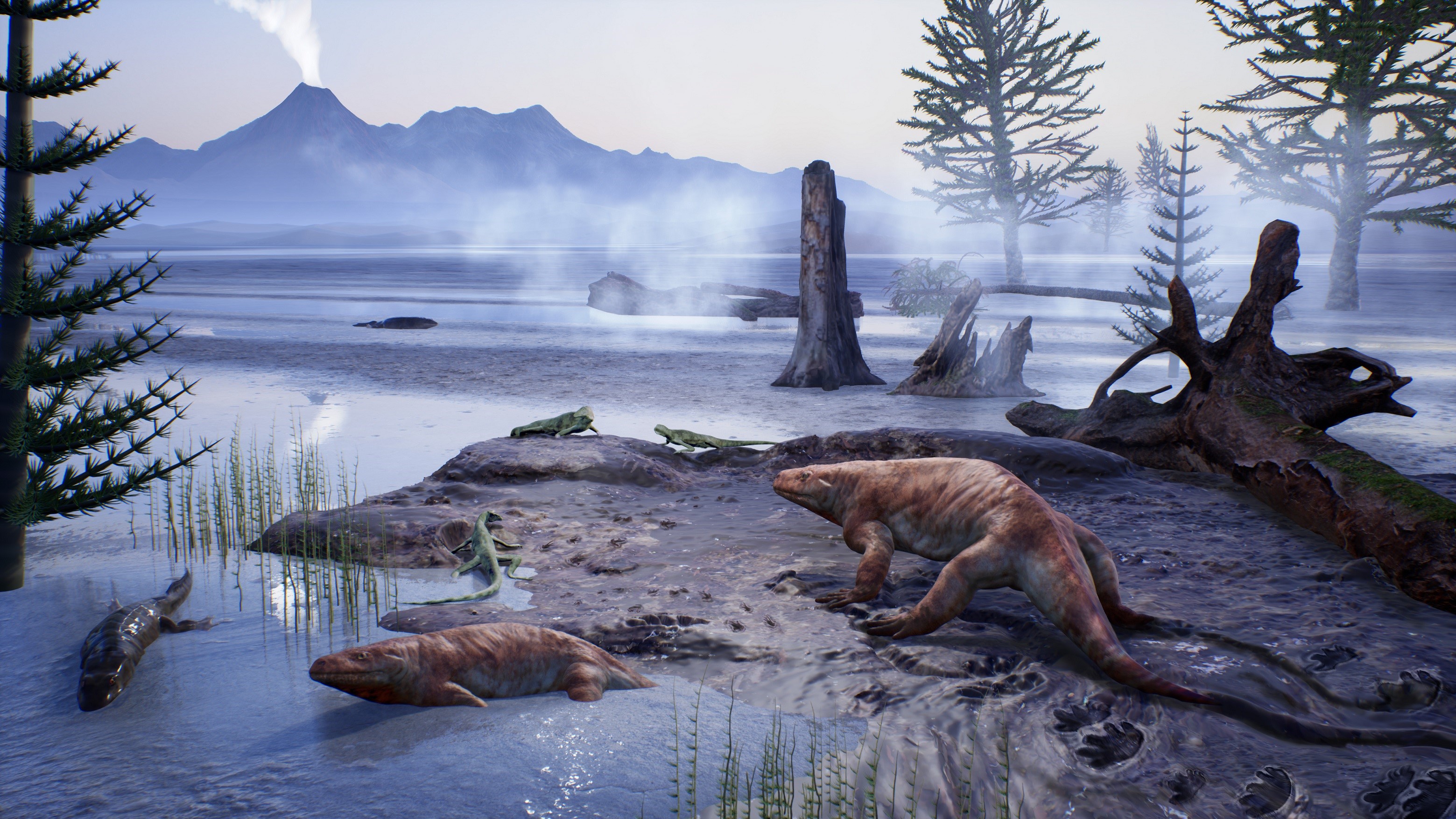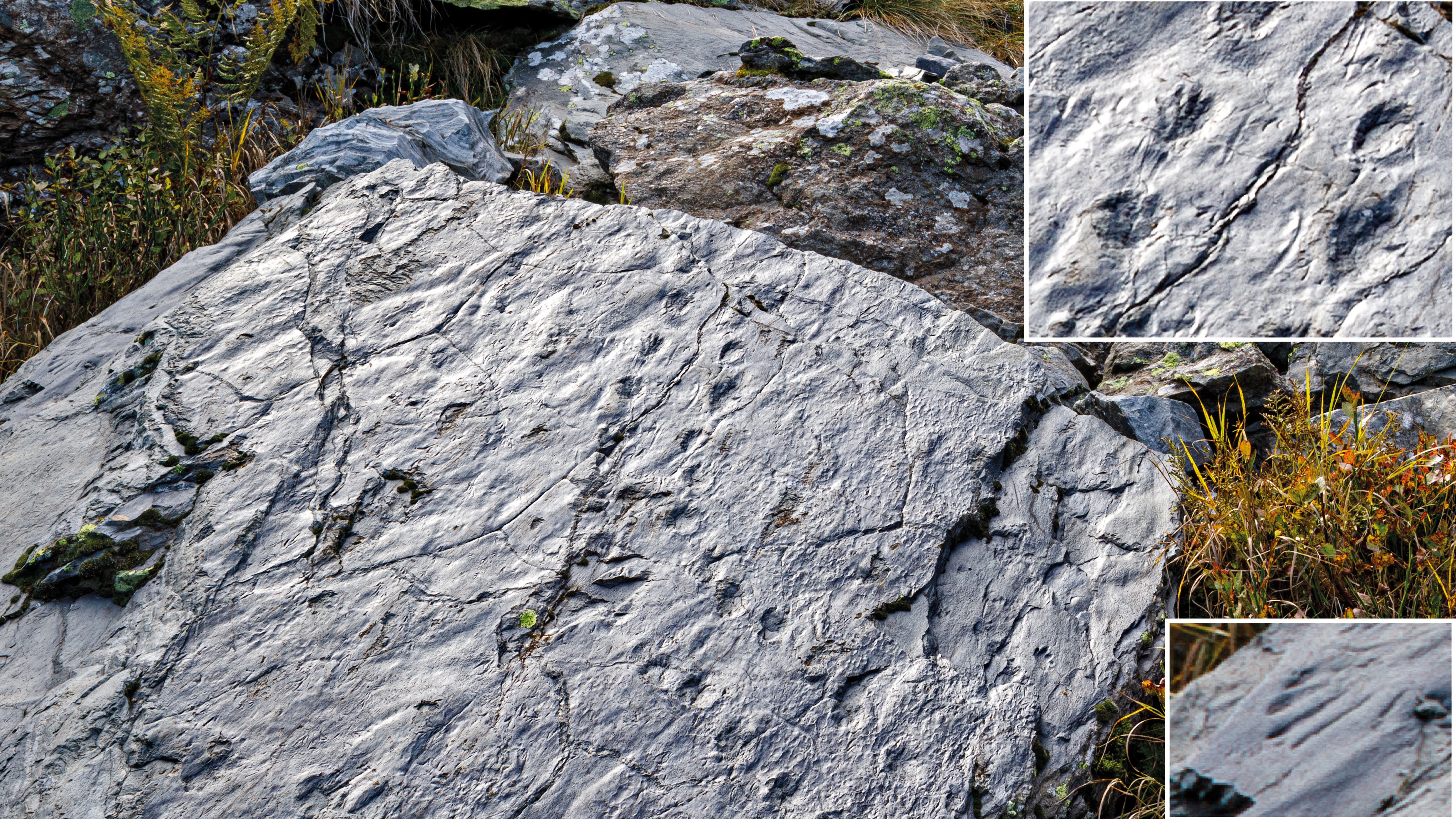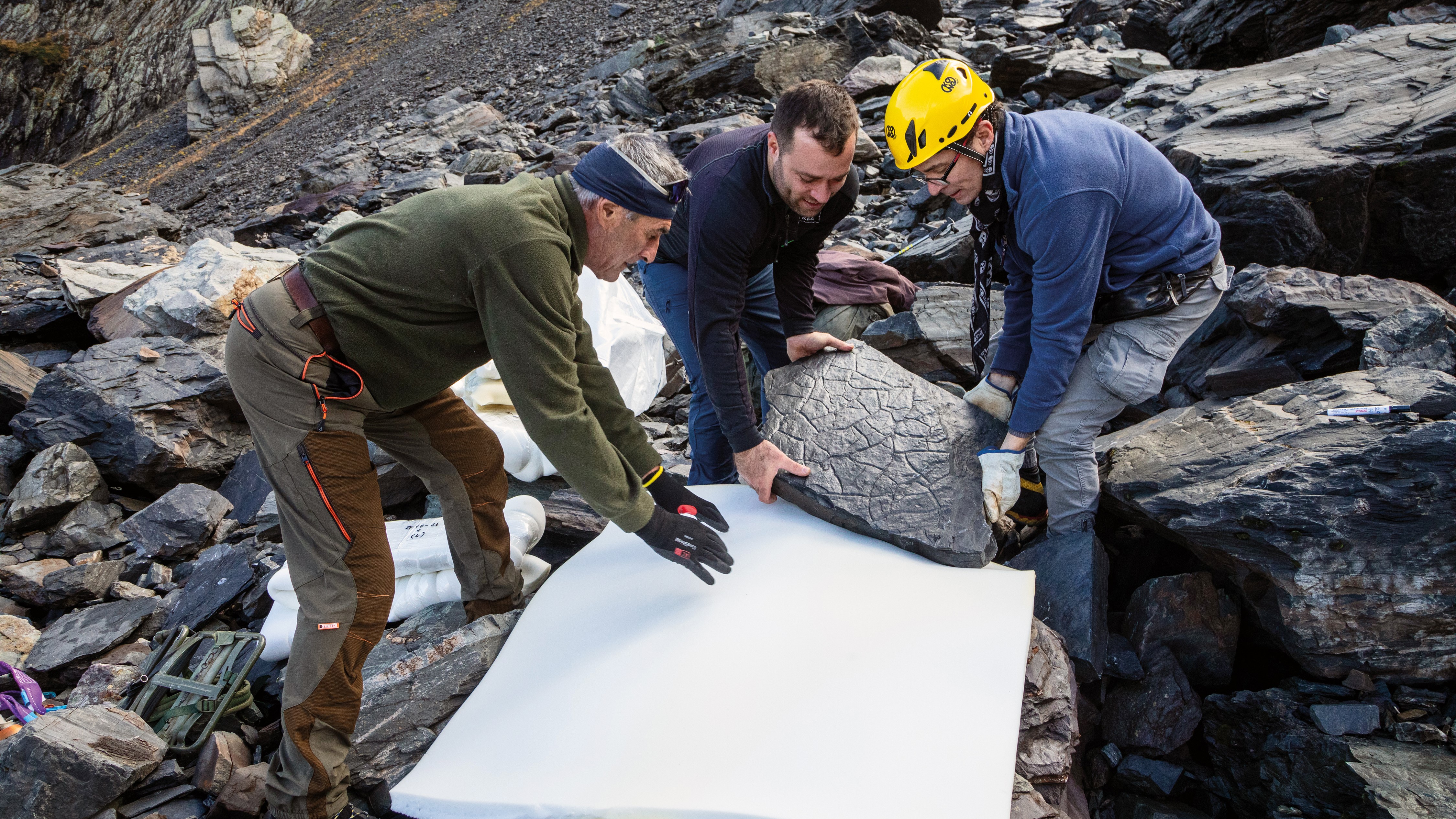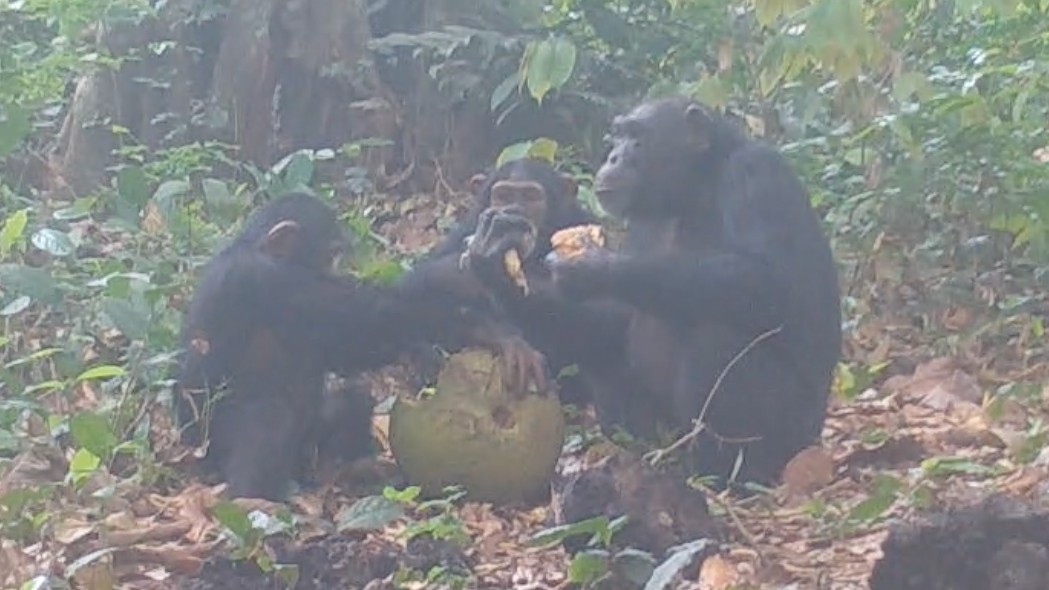Woman accidentally discovers 280 million-year-old lost world while hiking in Italian Alps
Stunningly preserved fossils of reptilian footprints and underbellies discovered last year in the Italian Alps have helped researchers unearth a tropical lakeside ecosystem that predates dinosaurs.

A woman hiking in the Italian Alps discovered a fragment of a 280 million-year-old ecosystem, complete with footprints, plant fossils and even the imprints of raindrops, researchers have confirmed.
Claudia Steffensen was walking behind her husband in the Valtellina Orobie Mountains Park in Lombardy in 2023 when she stepped on a rock that looked like a slab of cement, The Guardian reported. "I then noticed these strange circular designs with wavy lines," Steffensen told the newspaper. "I took a closer look and realized they were footprints."
Scientists analyzed the rock and found that the footprints belong to a prehistoric reptile, raising questions about what other clues beyond Steffensen's "rock zero" were hiding in these Alpine heights.
Experts subsequently visited the site multiple times and found evidence of an entire ecosystem dating back to the Permian period (299 million to 252 million years ago). The Permian was characterized by a fast-warming climate and culminated in an extinction event known as the "Great Dying," which wiped out 90% of Earth's species.
Traces of this ecosystem consist of fossilized footprints from reptiles, amphibians, insects and arthropods that often align to form "tracks," according to a translated statement. Alongside these tracks, researchers found ancient traces of seeds, leaves and stems, as well as imprints of raindrops and waves that lapped at the shores of a prehistoric lake. Evidence of this ancient ecosystem was found up to 9,850 feet (3,000 meters) high in the mountains and down in the bottom of valleys, where landslides have deposited fossil-bearing rocks over the eons.
The ecosystem, which is captured in fine-grained sandstone, owes its amazing preservation to its past proximity to water. "The footprints were made when these sandstones and shales were still sand and mud soaked in water at margins of rivers and lakes, which periodically, according to the seasons, dried up," Ausonio Ronchi, a paleontologist at the University of Pavia in Italy who examined the fossils, said in the statement. "The summer sun, drying out those surfaces, hardened them to the point that the return of new water did not erase the footprints but, on the contrary, covered them with new clay, forming a protective layer."
Sign up for the Live Science daily newsletter now
Get the world’s most fascinating discoveries delivered straight to your inbox.

The fine grain of this sand and mud preserved the finest details, including claw marks and patterns from the underbellies of animals, according to the statement. The researchers said the imprints come from at least five different animal species, some of which may have reached the size of modern-day Komodo dragons (Varanus komodoensis), growing to between 6.5 and 10 feet (2 to 3 m) long.

"At that time, dinosaurs did not yet exist, but the animals responsible for the largest footprints found here must still have been of a considerable size," Cristiano Dal Sasso, a vertebrate paleontologist at the Natural History Museum of Milan who was the first expert contacted about the discovery, said in the statement.
The fossils offer a window into a fascinating, long-gone world whose inhabitants went extinct at the end of the Permian — but they can also teach us about the times we live in now, the researchers said in the statement.
Many of the prehistoric imprints uncovered would have remained hidden were it not for climate change, which is rapidly reducing the ice and snow cover in the Alps. "These fossils … testify to a distant geological period, but with a global warming trend completely similar to that of today," the researchers said. "The past has a lot to teach us about what we risk getting the world into now."

Sascha is a U.K.-based staff writer at Live Science. She holds a bachelor’s degree in biology from the University of Southampton in England and a master’s degree in science communication from Imperial College London. Her work has appeared in The Guardian and the health website Zoe. Besides writing, she enjoys playing tennis, bread-making and browsing second-hand shops for hidden gems.









